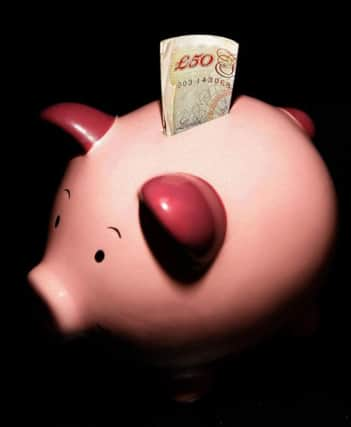The Isa gets nicer


It can’t fly through the air, or save you from a burning building , but it can ring-fence much more of your hard-earned cash from the taxman.
As of July 1, the Isa (which stands for individual savings account) has been transformed into the “super Isa”, or its alias - the Nisa (an abbreviation of the words new and Isa).
Advertisement
Hide AdAdvertisement
Hide AdWhat’s great about Isas, especially in the current low interest rate w hen returns on savings are generally still poor, is that you keep all of the interest you earn, rather than a portion of it going to the taxman.
You can also add to your non-taxed savings year after year, so even if rates aren’t that attractive now, when they do eventually improve, if you’ve already built up your savings, you’ll have a big pot of protected money ready to help you reap the rewards.
More than 23million adults, or roughly half of the UK’s adult population, holds an Isa, and the a verage Isa balance varies from £16,820 in England to £15,370 in Scotland, £14,930 in Wales and £13,130 in Northern Ireland.
So what new powers does the super Isa have?
For a start, as of July 1, the amount you can save tax free during the current tax year has pretty much tripled, up to £15,000 into a cash Isa during the tax year 2014-15. Between April 6, when the current tax year started, and June 30 this year, the full Isa allowance for the 2014-15 tax year was £11,880. Only a maximum of half of this amount, so £5,940, could be saved in cash and the rest could be saved in stocks and shares.
Advertisement
Hide AdAdvertisement
Hide AdThe new super Isa limit can be saved in cash, stocks and shares, or any combination of the two, so people have a lot more flexibility over what they do with their savings pots.
What if I have already started paying into an Isa between April 6 and June 30?
Any amounts that you have paid into an Isa during the current tax year will count towards the £15,000 annual limit. If you’ve done this, you may want to check with your provider to find out what its rules are around topping up to the new £15,000 limit.
Website Savingschampion.co.uk has found wide variations in the lengths of time that providers are giving customers to top up their fixed-rate Isa. Traditionally, when you put money into a fixed deal, you sacrifice your access to the cash for the term of the rate and are restricted from adding to your pot during the period. But the changes to maximum Isa limits mean providers are allowing savers to make top-ups. However, the time period that savers are being given to do this can vary from a matter of weeks to the rest of the tax year, so you may need to get your skates on.
Advertisement
Hide AdAdvertisement
Hide AdHave savings providers started ramping up competition since the new super Isa came into existence?
Unfortunately for many savers, while they can now put more money away tax-free, the general picture for Isa rates is still pretty week.
Rachel Springall, spokeswoman for Moneyfacts.co.uk, says there were some sharp cuts to rates at the start of the new tax year, but now Isas have become “trendy” thanks to the launch of the new savings limit, some hotter new deals are emerging.
“The question is: How long will these really last?” says Springall.
Advertisement
Hide AdAdvertisement
Hide AdShe highlights a new one-year fixed deal being offered by Virgin Money with a rate of 1.76% and a similar deal from Britannia with a rate of 1.71%. Barclays has recently launched a “good” two-year fixed Isa paying a rate of 2.02% and offering some flexibility in accessing funds.
Springall adds that Clydesdale and Yorkshire Banks recently unveiled a three-year Isa at 2.45% and BM Savings launched a “best buy” easy access Isa paying 1.55%.